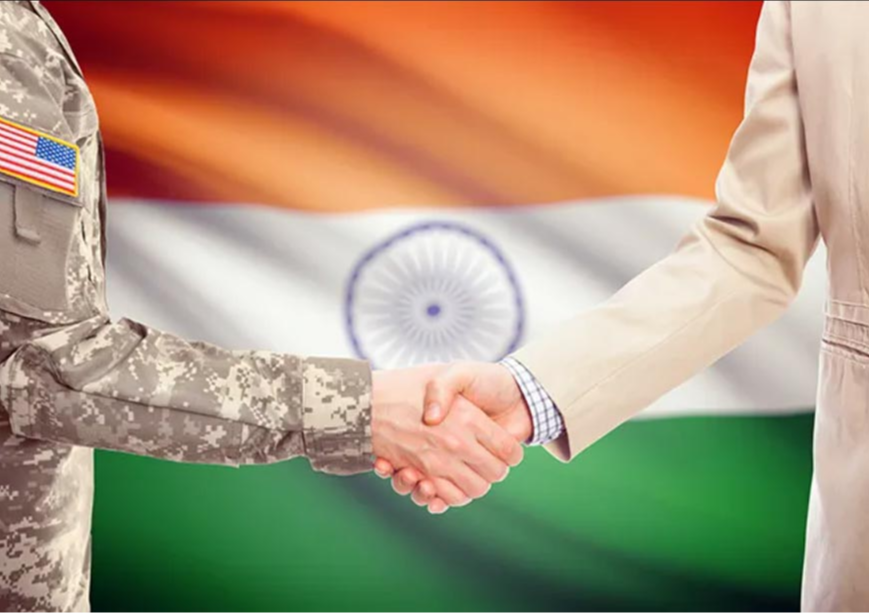
In the last two decades, the India-United States (US) relationship has made major strides and has evolved into a very broad-based cooperation. During this period, defence and security cooperation has been a key enabler in the development of a comprehensive global strategic partnership that encompasses a deepening multi-sectoral engagement. While some areas of divergence have popped up now and then, these have so far been handled with maturity and mutual accommodation by both sides. A significant fillip was provided by the Indian Prime Minister, Narendra Modi’s state visit to the US in June 2023, which raised expectations of more dynamism and robustness in the partnership. The visit had a special focus on defence technology and industrial cooperation, as highlighted in the section on defence in the joint statement, appropriately titled ‘Powering a Next Generation Defence Partnership’.
Defence and security cooperation has been a key enabler in the development of a comprehensive global strategic partnership that encompasses a deepening multi-sectoral engagement.
The India-US defence and security cooperation can be broadly classified into three distinct—though interrelated—areas. These include cooperation in regional and global security and development affairs; enhanced and institutionalised engagement between the armed forces (exercises, information sharing, training, other exchanges and programmes); and cooperation in defence technology and industry. It is the third leg of cooperation (technology and industry) that has consistently lagged and is yet to deliver meaningfully.
Defence technology cooperation
Efforts have been made in the last decade to step up defence technology cooperation. The lack of progress under the US-India Defence Technology and Trade Initiative (DTTI) put in place during the period 2012-14, was often attributed to the absence of suitable joint frameworks and delays in the conclusion of foundational agreements. Attempts were made to address this by signing the Framework for US-India Defence Relations (2015), designating India as a Major Defence Partner (2016), and signing three foundational agreements (LEMOA in 2016, COMCASA in 2018, and BECA in 2020). The DTTI coordinators from both sides were to meet twice a year; a DTTI Inter-Agency Task Force and a DTTI Industry Collaboration Forum were set up; four service-led joint working groups were formed (land systems, naval systems, air systems, and aircraft carrier technology cooperation). However, there was negligible movement in technology cooperation.
To provide fresh impetus, the Initiative on Critical and Emerging Technologies (iCET) was announced on May 2022 and launched in Jan 2023. As an overarching umbrella framework for technology cooperation, it covers commercial as well as defence technologies and is linked to the India-US strategic trade dialogue.
The lack of progress under the US-India Defence Technology and Trade Initiative (DTTI) put in place during the period 2012-14, was often attributed to the absence of suitable joint frameworks and delays in the conclusion of foundational agreements.
In the last few months, structured discussions have progressed to take defence technology cooperation forward, but concrete outcomes are awaited. Key challenges include aligning the R&D efforts of the private sector in the US with those of DRDO in India, tight control and strong safeguards in the US for sharing or working together on defence technologies, intellectual property rights, the strategic need to maintain technology leads, exclusivity in high-end defence technologies, and the commercial considerations for leveraging key technologies. The proposal for co-development leading to co-production was first raised during the initial meetings under the DTTI. So far, it appears that the enthusiasm of the Indian side on this proposal has not been shared in equal measure by the US side.
In the co-development leading to the co-production model, it would be useful to look at similar collaborative projects undertaken by the US. In many cases, even staunch US allies have not been able to retain the flexibility to independently make design changes, undertake modifications, and plug-in systems/sub-systems for their own specific requirements. In design and development work share, the ‘black box’ nature and stringent control of some key parts /software could not be eliminated.
Such collaborative programmes have numerous other challenges, but the overall benefits for India and the US—geopolitical, economic and technological—can outweigh the shortcomings. The model should be taken forward, leveraging the strengths of both sides and incorporating lessons from other similar programmes. Commercial and regulatory challenges will need to be addressed speedily, and a few such projects should be announced in 2024-25. In addition, a few joint defence R&D projects should be initiated within the next two years.
Cooperation in defence innovation
The India-US Defence Acceleration Ecosystem (INDUS-X) was launched in June 2023 to coordinate efforts in defence innovation in technology, systems and products. It linked the respective national defence ecosystem bases—Innovation for Defence Excellence (iDEX) in India and the Defence Innovation Unit (DIU) in the US. Since its launch, a senior advisory group has been established; initial joint innovation challenges (undersea communications, oil spill detection/integration system) have been launched under the INDUS-X Mutual Promotion of Advanced Collaborative Technologies (IMPACT); defence investor-start-up meetings have been held; and workshops have been conducted with academia and industry (supported by the US-India Business Council and the US-India Strategic Partnership Forum).
The India-US Defence Acceleration Ecosystem (INDUS-X) was launched in June 2023 to coordinate efforts in defence innovation in technology, systems and products.
The initial steps and efforts to work together in defence innovation are good, but the crucial test of implementation begins now. Issues related to joint funding support and commercialising successful innovations need to be incorporated into the plans. INDUS-X conceptualises a protégé-mentor concept, which will need to be spelt out in detail and suitably facilitated. In many cases, cross-linking defence start-ups with some key manufacturers on either side will be critical to enable innovations to be integrated into larger platforms and systems for effective use by the armed forces.
Defence industrial cooperation
The defence industrial cooperation is now being progressed under the ‘Roadmap for US-India Defence Industrial Cooperation’, signed in June 2023. The roadmap outlined some principles for this cooperation, which included working on changes in policies, licensing, export controls, security of supply arrangement, FDI, and technology transfers. It sought to enhance business-to-business interactions in the public and private sectors and to promote the integration of the Indian defence industry into global supply chains. The two sides were to present concepts for cooperative projects, to advance innovation and opportunities for cooperation.
Attention has been focused on two major projects. The first is the Memorandum of Understanding (MoU) between GE and HAL for co-production of GE-414 aero-engines, wherein the final contract is expected to be signed in the coming months. The second is the procurement of 31 MQ9B drones (which will also include assembly and global MRO in India), for which the Letter of Request (LOR) has been initiated by India, and a Letter of Offer and Acceptance (LOA) is expected soon. These projects are, however, not a direct outcome of the roadmap, though they have the potential to contribute to its objectives.
The roadmap for defence industrial cooperation itself is intended as guidance for the short-term and is due for revision soon along with the envisioned updating of the 2015 Framework for the US- India Defence Relationship.
Several private Indian defence and aerospace companies are now working with some major US companies for the design, manufacture of components and assemblies, and system integration for their global requirements. The two ecosystems are in a better position than a decade ago, to take these arrangements to the next level of industrial cooperation. The roadmap for defence industrial cooperation itself is intended as guidance for the short-term and is due for revision soon along with the envisioned updating of the 2015 Framework for the US- India Defence Relationship. However, there is a need to move from frameworks and concepts to the initiation of programmes and projects.
Conclusion
Many years and substantial efforts have been invested towards the common objectives of India-US defence technology and industrial cooperation. The broad vision with several enabling agreements, frameworks, organisations and roadmaps has been finalised. The Indian Prime Minister’s visit to the US, in June 2023 was heralded as a major step in propelling these efforts forward. While reviews at various levels, including at the 2+2 Dialogue are useful, there is a need for a clearer enunciation of deliverables, and shared commitment to deliver the same. Focus on concurrent global challenges, a few areas of divergence, existing and evolving defence partnerships on either side and the forthcoming elections in both countries should not slow the momentum in this key area of bilateral cooperation. The next two to three years will be crucial in moving from a series of frameworks and core groups to executing and translating promises into reality. The all-important phase of delivery must begin soon.
Girish Luthra is a Distinguished Fellow at the Observer Research Foundation
The views expressed above belong to the author(s). ORF research and analyses now available on Telegram! Click here to access our curated content — blogs, longforms and interviews.




 PREV
PREV


